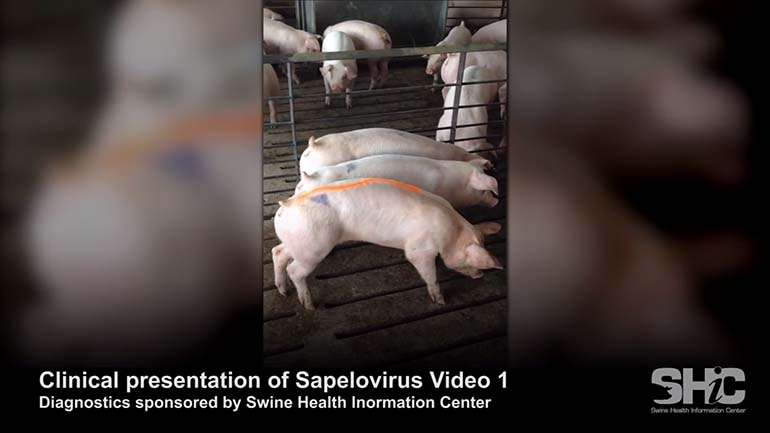Porcine sapelovirus has been implicated in an acute outbreak of atypical neurologic disease.
July 29, 2016

Using funds from Swine Health Information Center’s Support for Diagnostic Fees program, porcine sapelovirus has been implicated in an acute outbreak of atypical neurologic disease. Paulo Arruda, Iowa State University, led a team of diagnosticians (Kent Schwartz, ISU; Albert Rovira, University of Minnesota; Jerome Nietfeld, Kansas State University) and research assistant professor Ben Hause, KSU, through the case, acting on the request of the submitting veterinarian and owner.
The initial and final case reports detailing the discovery of porcine sapelovirus, including videos of the clinically affected pigs, are posted on www.swinehealth.org/sapelovirus.
To date, sapelovirus from other species have not been reported to be associated with nervous disease. In this case, a novel sapelovirus was the only agent detected associated with a unique clinical presentation of CNS disease. At least one previous case report documents the neuroinvasive potential of porcine sapelovirus in swine. However, knowledge gaps remain in disease causation (i.e. Koch’s postulates as yet unfulfilled), epidemiology, pathogenesis and biologic relevance of this potential pathogen.
In incidents of high or ongoing morbidity or mortality where an etiology is either not identified or there is a strong suspicion that the identified etiology is not the likely cause of the outbreak, SHIC is offering diagnostic fee support after the initial diagnostic workup is completed and paid for by the owner. In these cases, additional support for the fees of further diagnostic workup may help to identify newly introduced or emerging swine diseases. A description of the requirements, submission and review process for the Support for Diagnostic Fees program can be found on the SHIC website.
You May Also Like


